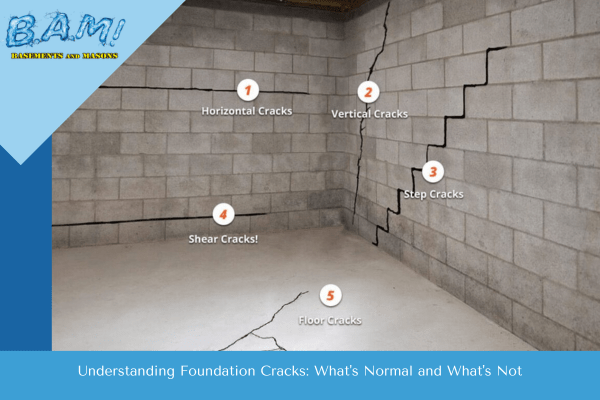See This Report on Best Basement Waterproofing
See This Report on Best Basement Waterproofing
Blog Article
Some Known Details About Best Basement Waterproofing
Table of ContentsSome Ideas on Best Basement Waterproofing You Should Know8 Simple Techniques For Best Basement WaterproofingThe Best Guide To Best Basement WaterproofingBest Basement Waterproofing Can Be Fun For AnyoneBest Basement Waterproofing Fundamentals Explained
AdvantaClean's qualified professionals and technicians will certainly situate the water source. If wall surface or slab fractures are existing, we will certainly inject polyurethane and epoxies into the splits and secure the concession, preventing additional moisture from going into.
If there's condensation on the outside of the aluminum foil, you have high moisture in your basement. If the aluminum foil has condensation on the inside surface area (following to the wall), the dirt around your residence may be naturally damp from a high water table or bad dirt water drainage.
You can waterproof just your interior walls, which might solve the problem. Or you can waterproof your outside walls, which is a better bet but more expensive. Below's the scoop on the various kinds: These thick finishes are cement-like. Once they dry out, they adhere permanently to concrete and stonework wall surfaces (Best Basement Waterproofing).
The Greatest Guide To Best Basement Waterproofing
Concrete waterproof finishings can't be used to formerly painted surfaces; examine the tag. Understood as densifiers, they are ideal only for walls that have not been repainted or sealed.
But you brush, roll, or spray it on a lot more thickly one gallon covers just 75 square feet, not the 300 square feet regular with conventional paint. Water resistant paint is great for DIY application. You can apply it over painted surface areas, and paint over it once it's treated (one gallon prices $37).
It can set you back $10,000 to $15,000, depending on the work required. Outside waterproofing involves digging deep into all around the residence to the full depth of the structure walls, then installing a water-proof coating or membrane layer covered by drainage panels.
We've all been caught in a storm without umbrella or raincoat (Best Basement Waterproofing). And it's constantly a dish for calamity: everything's damp, your coiffure is destroyed, and points are getting stuffy. A basement without waterproofing is type of like that. Minus the spoiled coiffure component. Your cellar does not intend to experience a downpour news without proper defense equally as long as you do not intend to.
Some Known Factual Statements About Best Basement Waterproofing
However if you've done your research study, you would certainly recognize there are two kinds of waterproofing: inside and exterior. It can obtain puzzling what they both mean, which one's a much better financial investment, and what will really keep the water out. Do not fret, we created this blog to conveniently define both methods for you and discuss the benefits and drawbacks of each.
Outside waterproofing is a waterproofing approach that entails securing your home from the exterior. The structure wall surfaces are then cleaned up, secured, and covered with a water-proof membrane layer or sealant.
Some Known Incorrect Statements About Best Basement Waterproofing
It's a much more involved process that requires digging up your backyard, which is expensive and time-consuming. Outside waterproofing includes getting rid of everything surrounding your home, consisting of home porches, driveways, walkways, landscaping, AC systems, decks, and so forth. If any of the work was done incorrectly and water is still entering your cellar, there isn't much you can do to fix or click here for info repair it.
Inside cellar waterproofing entails waterproofing from the within. Any type of water that leakages into your basement is rerouted prior to it touches your flooring. It's kind of like putting on a raincoat under your garments. It involves 2 things: a water drainage track and a sump pump. It works by sealing the within of your cellar wall surfaces and floors so water that tries to go into is funnelled out via a sump pump.
It's a reliable technique to water-proof your basement. The disadvantage of indoor basement waterproofing mostly has to do with the installation procedure.
8 Simple Techniques For Best Basement Waterproofing
Finally, outside and interior cellar waterproofing are both effective methods of shielding your home from water damages. Outside waterproofing creates a barrier that avoids water from entering your home, while interior waterproofing reroutes water that does enter your home. And it is very important to keep in mind that outside waterproofing is a pricey and disruptive installation procedure when compared to indoor waterproofing.
Whichever method you pick, see to it you pick a reputable and credible contractor for the job. Both approaches need experienced employees to deal with the task. If you have any inquiries regarding basement waterproofing, please connect to us. And if you remain in our solution area and have water in your basement, call us for a cost-free, no-obligation home evaluation.
You can fill in our kind below, begin a conversation in the bottom right-hand edge, or call us at 1-800-827-0702.
Report this page